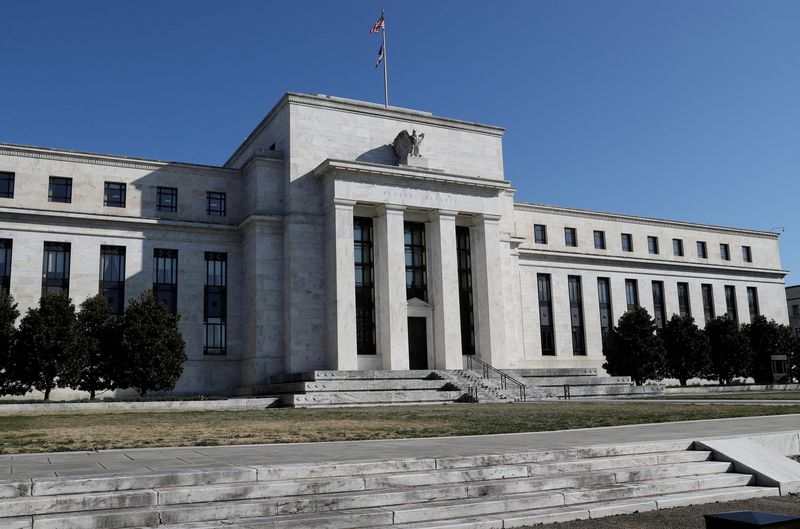
© Reuters. FILE PHOTO: Federal Reserve Board building on Constitution Avenue is pictured in Washington, U.S., March 19, 2019. REUTERS/Leah Millis/File Photo
(Reuters) – The Federal Reserve should be cautious about raising interest rates in the face of recent banking stress, Chicago Fed President Austan Goolsbee said on Tuesday, noting that a pullback in bank lending would help quell inflation and leave less for monetary policy to do.
“At moments like this, of financial stress, the right monetary approach calls for prudence and patience – for assessing the potential impact of financial stress on the real economy,” Goolsbee said in his first extensive comments on the policy outlook since taking the top job at the Chicago Fed in January.
Inflation, which by the Fed’s preferred measure is running at more than twice its 2% target, has not come down enough even after the U.S. central bank’s stiff interest rate hikes last year, he said in prepared remarks for an event at the Economic Club of Chicago. Job growth has been “remarkable.” Based on that data alone, Goolsbee added, more aggressive policy tightening might be seen to be warranted.
But the failure of two regional U.S. banks in mid-March triggered financial stress that could have a “material impact” on the real economy that the Fed needs to take into account, he said.
“Given how uncertainty abounds about where these financial headwinds are going, I think we need to be cautious,” Goolsbee said. “We should gather further data and be careful about raising rates too aggressively until we see how much work the headwinds are doing for us in getting down inflation.”
Goolsbee’s call for patience sounded a bit more dovish than some of his colleagues who have spoken since March 22, when the Fed raised the benchmark overnight interest rate by a quarter of a percentage point to a range of 4.75%-5.00%, and signaled that most of its policymakers expected one more rate hike to be enough to wring high inflation out of the economy.
But he also made it clear he is not advocating for the kind of rate cuts that the central bank has undertaken in the face of past events of financial stress, and that markets are currently pricing in for the second half of this year.
Given the trouble the Fed has had with bringing down inflation so far, and the danger of seeming to give in “any time the market throws a tantrum,” the central bank should lean first on supervisory and regulatory tools to deal with banking system stress, he said.





